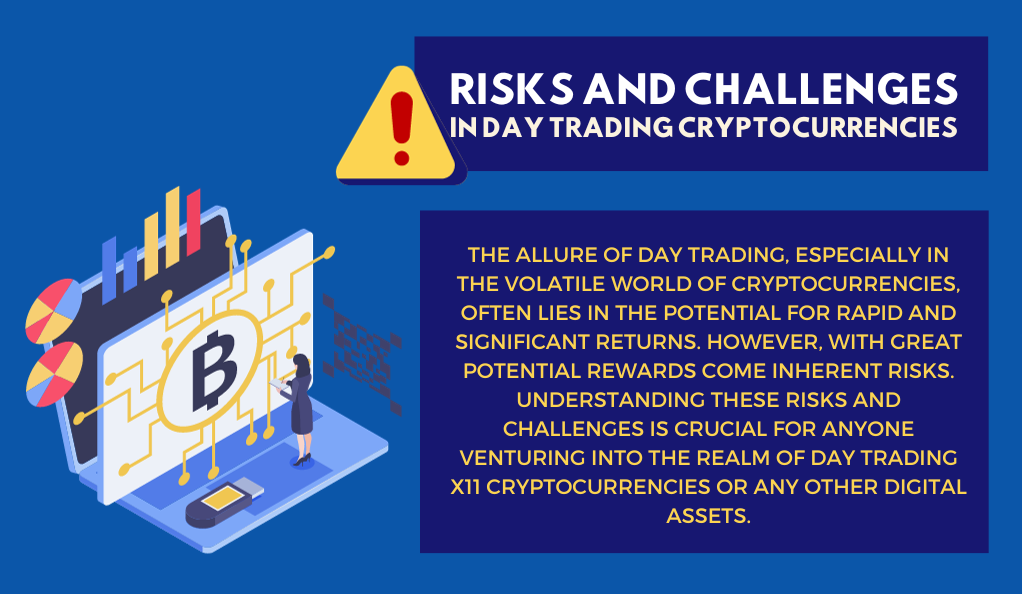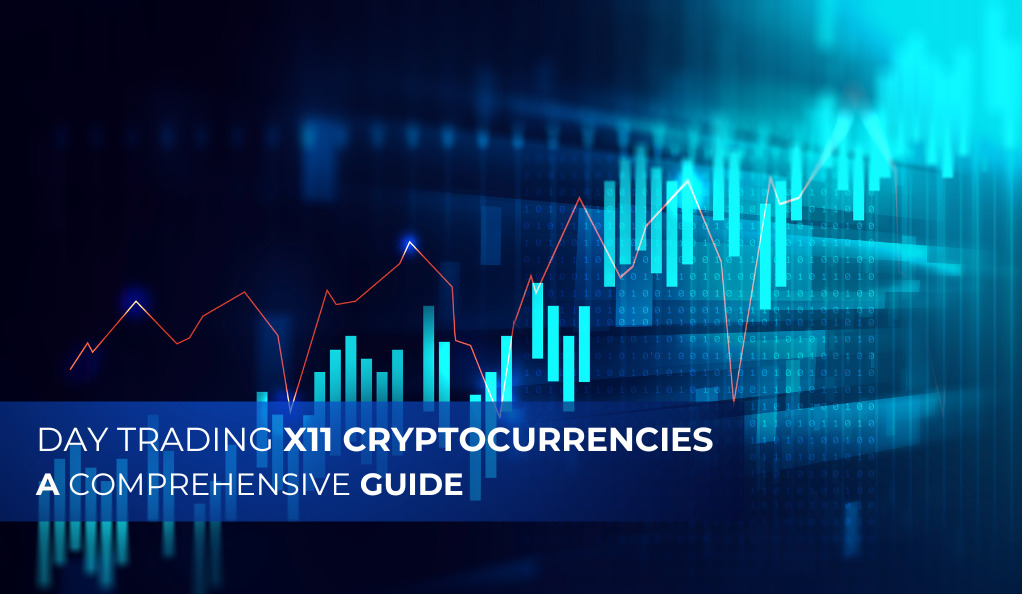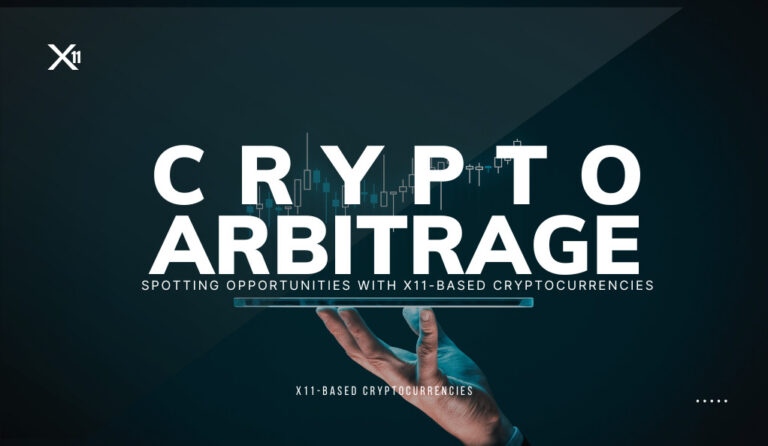Day trading, a term that has gained significant traction in the financial world, refers to the practice of buying and selling financial instruments within a single trading day. The objective? To capitalize on small price movements in highly liquid assets, such as stocks, forex, and, more recently, cryptocurrencies. But how does day trading differ from its counterpart, long-term trading? Let’s delve into the intricacies of both to gain a clearer understanding.
What is Day Trading?

At its core, day trading is a short-term strategy. Traders, often referred to as “day traders,” enter and exit positions within the same day, ensuring no open positions remain when the market closes. This approach is in stark contrast to long-term trading, where investors hold onto their assets for months or even years.
The allure of day trading lies in its potential for quick profits. By leveraging small price fluctuations that occur throughout the day, seasoned day traders can accumulate significant gains. However, it’s worth noting that this form of trading requires a keen eye, quick decision-making skills, and a thorough understanding of market trends.
Day Trading vs. Long-Term Trading: A Comparative Overview
- Duration:
- Day Trading: Within a single trading day.
- Long-Term Trading: Months to years.
- Objective:
- Day Trading: Capitalize on short-term price movements.
- Long-Term Trading: Capitalize on long-term growth and dividends.
- Risk Level:
- Day Trading: High (due to market volatility).
- Long-Term Trading: Moderate to low (spread over a longer duration).
- Required Skill Set:
- Day Trading: Quick decision-making, real-time analysis, risk management.
- Long-Term Trading: Patience, fundamental analysis, long-term forecasting.
- Tools & Platforms:
- Day Trading: Real-time trading platforms, technical analysis tools.
- Long-Term Trading: Fundamental analysis tools, long-term investment platforms.
How is it different from long-term trading?
While day trading focuses on the immediate, long-term trading is a marathon, not a sprint. Long-term traders, often referred to as “investors,” base their decisions on an asset’s intrinsic value and potential for growth over time. They are less concerned with daily market fluctuations and more interested in the overarching trends and fundamentals of an asset.
For instance, while a day trader might sell a stock due to a slight dip in price, a long-term trader might see this as a buying opportunity, anticipating that the stock’s value will rise in the future. This fundamental difference in approach stems from the distinct objectives and time horizons of each trading style.
Understanding X11 Cryptocurrencies
The world of cryptocurrencies is vast and varied, with numerous algorithms and protocols underpinning different digital coins. One such algorithm that has garnered attention in the crypto community is X11. But what exactly are X11 cryptocurrencies, and why are they significant in the broader crypto landscape?
What are X11 Cryptocurrencies?
X11 is a cryptographic algorithm used by several cryptocurrencies. It’s unique in that it doesn’t rely on just one hashing function, but eleven different functions, hence the name “X11”. This chained hashing approach offers a higher level of security and is more energy-efficient compared to other algorithms, making it a favorite among many in the crypto community.
Some popular cryptocurrencies that utilize the X11 algorithm include Dash, CannabisCoin, and Startcoin, among others. These coins are often praised for their enhanced security features and reduced heat generation during mining, leading to longer lifespans for mining hardware.
| Cryptocurrency | Launch Year | Key Features |
|---|---|---|
| Dash | 2014 | Instant transactions, Private transactions, Decentralized governance |
| CannabisCoin | 2014 | Targeted for the cannabis industry, Fast transactions |
| Startcoin | 2014 | Designed to support crowdfunding projects, Fast transactions |
The significance of X11 in the crypto world
The introduction of the X11 algorithm marked a shift in the crypto mining landscape. Its energy efficiency meant that miners could operate at a lower cost, making the mining process more accessible to a broader audience. Additionally, the multi-hash approach of X11 ensures that potential vulnerabilities in one hashing function don’t compromise the entire system, adding an extra layer of security.
Furthermore, X11’s adaptive nature means that it can adjust its hashing requirements based on the network’s needs. This adaptability ensures that the algorithm remains resistant to Application-Specific Integrated Circuits (ASIC) mining, promoting decentralization and reducing the risk of a 51% attack.
In essence, X11 cryptocurrencies represent a blend of innovation, security, and efficiency in the ever-evolving world of digital assets. As day traders look to diversify their portfolios and tap into emerging opportunities, understanding the nuances of X11 becomes paramount.
Tools and Platforms for Day Trading X11 Cryptocurrencies
In the fast-paced world of day trading, having the right tools and platforms at your disposal can make all the difference. When it comes to X11 cryptocurrencies, traders need specialized platforms that cater to the unique characteristics of these digital assets. Let’s explore the essential tools and platforms that can enhance the day trading experience for X11 cryptocurrencies.
Essential Software and Platforms
- Cryptocurrency Exchanges: These are platforms where traders can buy and sell cryptocurrencies. For X11 coins, it’s crucial to choose exchanges that support a wide range of these assets. Some popular exchanges that list X11 cryptocurrencies include Binance, Kraken, and Bitfinex.
- Trading Bots: Automated trading bots can execute trades on behalf of traders based on predefined criteria. Given the volatility of the crypto market, bots can be especially useful for day traders, allowing them to capitalize on short-term price movements without constantly monitoring the market.
- Technical Analysis Tools: Platforms like TradingView and CryptoCompare offer a suite of tools for analyzing price charts, identifying trends, and making informed trading decisions. These tools can be invaluable for day traders looking to gain an edge in the market.
- Wallets: Secure storage is paramount in the crypto world. Hardware wallets like Ledger Nano S and Trezor provide an added layer of security by storing cryptocurrencies offline, away from potential online threats.
Importance of Real-Time Data Feeds
Real-time data is the lifeblood of day trading. With prices fluctuating by the second, having access to real-time price feeds ensures traders can make timely decisions. Platforms that offer live streaming of market data, coupled with instant trade execution capabilities, are essential for those serious about day trading X11 cryptocurrencies.
Moreover, real-time news feeds can also play a pivotal role. Cryptocurrency prices can be significantly influenced by news events, regulatory changes, or technological advancements. Staying updated with the latest news ensures traders are always one step ahead.
Strategies for Day Trading X11 Cryptocurrencies
Day trading, while potentially lucrative, is also fraught with risks. To navigate the choppy waters of the crypto market, especially with X11 cryptocurrencies, traders need to arm themselves with effective strategies. Here, we’ll explore some of the most popular and effective strategies tailored for day trading X11 digital assets.
Trend Following in the Crypto Market
Trend following is a cornerstone strategy in the world of trading, and its significance is heightened in the volatile realm of cryptocurrencies. One of the primary tools employed by traders to identify potential trends is moving averages. By averaging out price data over specific periods, moving averages can help pinpoint the onset of upward or downward trends. For instance, when a short-term moving average, such as the 50-day MA, crosses above a long-term one like the 200-day MA, it often signals the beginning of an upward trend.
Complementing this, momentum indicators like the Relative Strength Index (RSI) or the Moving Average Convergence Divergence (MACD) are invaluable. These tools gauge the strength and sustainability of a trend. An RSI value surpassing 70, for example, might suggest that a cryptocurrency is in an overbought state, hinting at a potential price correction in the near future.
Range Trading and its Relevance to Volatile Markets
Range trading is a strategy that capitalizes on the predictable oscillations of asset prices between established high and low points, known as resistance and support levels respectively. In the context of the notoriously volatile cryptocurrency market, this approach becomes particularly relevant. Traders identify these support and resistance levels as points where a cryptocurrency’s price tends not to fall below or rise above. These levels serve as markers for setting entry and exit points for trades.
Enhancing this strategy, tools like Bollinger Bands come into play. Comprising a middle band (an N-period simple moving average) flanked by upper and lower bands, Bollinger Bands adjust based on market volatility. When a cryptocurrency’s price touches the upper band, it might indicate an overbought state, suggesting a potential price drop. Conversely, touching the lower band might signal an oversold condition, hinting at a potential price rise.
Scalping in the Fast-Paced Crypto World
Scalping is a high-frequency trading strategy that aims to seize small profit margins from minute price changes, making it especially suited for the rapid and dynamic environment of cryptocurrency markets. Scalpers, as traders employing this strategy are known, engage in a multitude of small trades throughout the day, capitalizing on minuscule price movements. The objective is to accumulate significant gains from these tiny fluctuations over time. To enhance the potential of this strategy, some scalpers utilize leverage, a tool that amplifies their trading position.
However, while leverage can magnify returns, it also escalates the potential for losses, making it imperative for traders to exercise caution and judiciousness. In the whirlwind world of crypto, where prices can shift in seconds, scalping demands a keen eye, swift decision-making, and a robust understanding of market micro-movements.
Risks and Challenges in Day Trading Cryptocurrencies

The allure of day trading, especially in the volatile world of cryptocurrencies, often lies in the potential for rapid and significant returns. However, with great potential rewards come inherent risks. Understanding these risks and challenges is crucial for anyone venturing into the realm of day trading X11 cryptocurrencies or any other digital assets.
Understanding Market Volatility
- Price Swings: Cryptocurrencies are renowned for their dramatic price fluctuations. A coin’s value can soar or plummet within mere hours, influenced by market sentiment, news events, or regulatory announcements.
- Liquidity Concerns: Not every cryptocurrency boasts high liquidity. Trading a less liquid coin can pose challenges in executing trades at the desired prices, especially when dealing with large volumes. This discrepancy can lead to “slippage,” where the actual execution price diverges from the anticipated price.
The Impact of Global Events on Cryptocurrency Prices
Global events play a pivotal role in shaping the cryptocurrency market, often leading to significant price fluctuations. Regulatory news, for instance, carries immense weight. Announcements related to cryptocurrency regulations, be they bans, new guidelines, or even endorsements by governments, can profoundly influence prices, either driving them up or pushing them down. In addition to regulatory shifts, technological developments also play a crucial role.
Any updates, enhancements, or vulnerabilities in a cryptocurrency’s underlying technology can either bolster its value or lead to sharp declines. For instance, a successful upgrade might be met with market enthusiasm, while a security breach could trigger a loss of investor confidence and a subsequent price drop. Lastly, the crypto market, being highly sentiment-driven, is susceptible to external influences such as rumors, celebrity endorsements, or negative press. Such factors can sway investor sentiment rapidly, leading to abrupt price changes.
External Factors and Manipulations
- Pump and Dump Schemes:
- A manipulative tactic where certain individuals or groups artificially boost a cryptocurrency’s price.
- These actors then sell off their holdings at the peak, leading to a rapid price decline.
- Day traders, especially those unaware of such schemes, can be adversely affected.
- Whale Movements:
- Refers to the actions of large cryptocurrency holders, commonly known as “whales.”
- Their substantial trades can lead to sudden market shifts.
- These movements can impact other traders, especially those unprepared for such rapid changes.
Leveraging and Margin in Cryptocurrency Day Trading

The world of cryptocurrency trading offers various tools and techniques to amplify potential returns. Among these, leveraging and margin trading stand out as powerful methods, allowing traders to control larger positions with a smaller amount of capital. However, while they can magnify profits, they can also amplify losses. Let’s explore these concepts in detail.
How Leveraging Works in the Crypto World
Leverage is a powerful tool in the trading arena, allowing traders to control positions much larger than their actual capital. In the cryptocurrency domain, this concept is often expressed as a ratio, such as 2:1, 10:1, or even higher, indicating the extent to which a trader’s position can be amplified compared to their initial deposit, known as the margin. For example, a trader with $1,000 in capital using a 10:1 leverage can effectively take a position worth $10,000. This amplification means that for every 1% movement in the market, the trader’s position will experience a 10% change, magnifying both potential profits and losses. Leveraging, while offering opportunities for significant gains, also introduces heightened risks, making it essential for traders to understand its mechanics and implications thoroughly.
Risks and Benefits of Trading on Margin
Trading on margin amplifies both the potential rewards and risks in the cryptocurrency market. By borrowing funds to take larger positions, traders can achieve higher returns even with small market movements. However, this also means that losses can be magnified, sometimes exceeding the initial investment. Additionally, margin trading often involves interest costs for the borrowed funds. Another critical aspect to consider is the margin call, where brokers or exchanges may require traders to deposit additional funds if a leveraged position moves against them significantly. If not met, the position might be closed at a loss. Given these dynamics, it’s essential for traders to be well-informed and exercise caution when trading on margin.
Best Practices for Leveraged Trading
- Start Small:
- For those new to leveraged trading, it’s advisable to begin with lower leverage ratios. This approach allows traders to familiarize themselves with the dynamics of leverage without taking on excessive risk.
- Use Stop-Loss Orders:
- These are automated orders that close out a position once the price reaches a predetermined level. They help limit potential losses and provide a safety net against adverse market movements.
- Stay Informed:
- Market conditions can change rapidly. It’s essential for traders to remain updated with global news, especially events that could significantly impact cryptocurrency prices.
- Risk Management:
- Never invest more than you’re willing to lose. Proper risk management involves diversifying trades, setting clear limits, and regularly reviewing and adjusting strategies based on market conditions.
Tips and Best Practices for Success

Day trading X11 cryptocurrencies, or any digital assets for that matter, is a journey filled with highs and lows. While the potential for profit is undeniable, the path is riddled with challenges that can test even the most seasoned traders. As we wrap up this comprehensive guide, let’s explore some tips and best practices that can pave the way for success in this dynamic landscape.
Importance of Continuous Learning
The ever-evolving landscape of cryptocurrency trading underscores the significance of continuous learning. Staying updated is paramount, and traders can achieve this by subscribing to crypto news outlets, joining relevant forums, and participating in webinars. Beyond staying informed, actively seeking education through online courses, workshops, and seminars can refine trading skills and offer deeper insights into market dynamics. In essence, a commitment to ongoing education equips traders with the knowledge and tools needed to navigate the complexities of the crypto world effectively.
Keeping Emotions in Check
- Avoid FOMO (Fear of Missing Out):
- This emotion can drive traders to make impulsive decisions.
- It’s vital to adhere to a trading plan and not be swayed by market hype or sudden surges.
- Handle Losses Gracefully:
- Not every trade will yield profits.
- Accepting losses as part of the trading journey and learning from them is essential for long-term success and mental well-being.
Setting Realistic Expectations and Goals
- Define Your Goals:
- Every trader should have clear objectives, whether they’re specific profit targets, learning milestones, or other aspirations.
- These goals can guide trading decisions and provide a sense of direction.
- Risk Management:
- It’s crucial to only invest what one can afford to lose.
- Setting aside a specific portion of capital for day trading and diversifying investments can help mitigate potential risks and losses.
Building a Network
- Join Trading Communities:
- Engaging with fellow traders can offer valuable insights, strategies, and support.
- Online forums, social media groups, and local meetups are excellent platforms for networking and sharing knowledge.
- Mentorship:
- Seeking guidance from experienced traders can provide invaluable insights.
- A mentor can help navigate common pitfalls, share tried-and-true strategies, and offer support during challenging times.
Using Technology to Your Advantage
In the digital age of cryptocurrency trading, leveraging technology can significantly enhance trading efficiency and security. Automated tools, such as trading bots, can execute trades based on predefined criteria, allowing traders to capitalize on market opportunities even when they’re not actively monitoring. Automated alerts can also provide timely notifications of market shifts. However, as the digital realm is rife with threats, ensuring robust security for trading platforms and wallets is paramount. Regular password updates and the adoption of two-factor authentication can bolster security measures, safeguarding investments from potential breaches.
Conclusion
Day trading X11 cryptocurrencies presents a world of opportunities, blending the dynamism of the crypto market with the unique attributes of the X11 algorithm. While the potential for significant returns is alluring, it’s essential to approach this venture with knowledge, preparation, and caution. From understanding the foundational aspects of day trading and the intricacies of X11 cryptocurrencies to leveraging advanced strategies and tools, success lies in continuous learning and adaptability. Moreover, the importance of risk management, emotional resilience, and network building cannot be overstated. In this ever-evolving landscape, staying informed, grounded, and proactive is the key. As we navigate the complexities of the crypto world, let this guide serve as a beacon, illuminating the path to informed and strategic trading.
At axerunners.com, our goal is to furnish well-rounded and trustworthy information regarding cryptocurrency, finance, trading, and stocks. Nonetheless, we avoid providing financial advice and instead encourage users to conduct their own research and meticulous verification.
Read More











